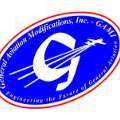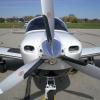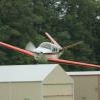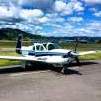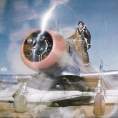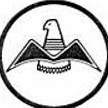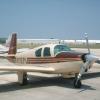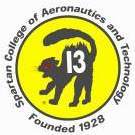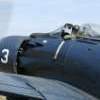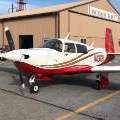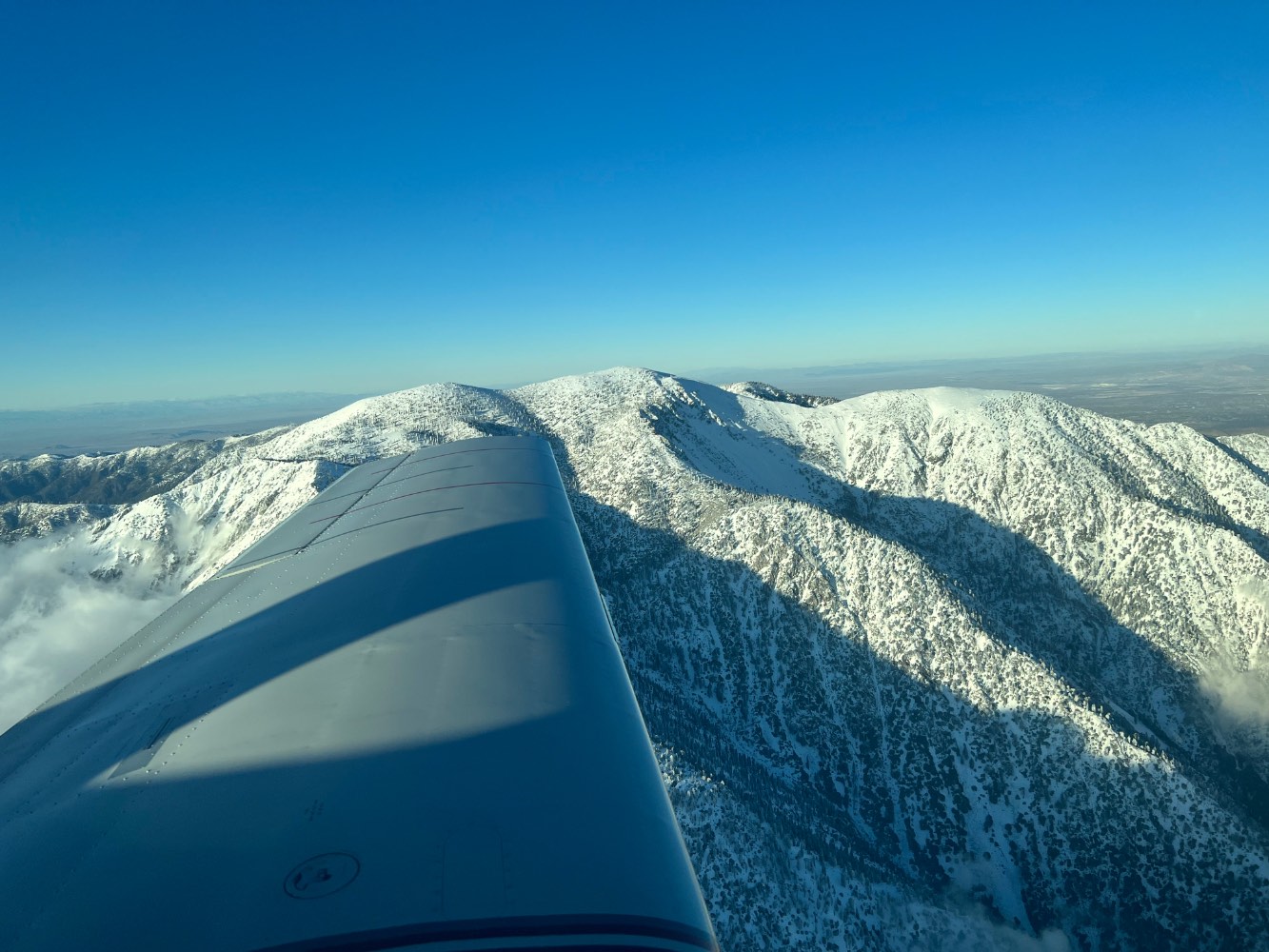Leaderboard
Popular Content
Showing content with the highest reputation on 01/17/2023 in all areas
-
You may continue to have that choice for years and years to come . . . or the EPA/FAA/LMNOP may choose to regulate 100LL out of existence as fast as possible. We sincerely hope not. In fact, we have been lobbying the EPA to NOT make any rash, sweeping declarations that will accelerate the banning of leaded fuels. There is a time when leaded fuels will be completely gone, and that will be to the benefit of us all, but that time isn't today or tomorrow. It's important to understand that GAMI doesn't want to be or plan to be in the business of making or selling fuel. We created a formula, which will be liscensed to someone else to make, distribute, and sell G100UL. Go out to your airport and look at the name on the fuel truck. That will be the same. The little sticker that says 100LL will change to G100UL, but the big name on the side of the truck will still be what it is today. They and the FBO will determine what you pay for that fuel. We couldnt' demand a higher or lower price if we wanted to. So, I don't have any clue what the PUMP PRICE will be. However, I do have some detailed calulations of what the manufacturing costs will be. Again, this is tied to volume. At current, relatively low, volumes, the cost of manufacture may be about $0.80 per gallon higher than the cost to manufacture 100LL. As volumes increase, and some materials sourcing improves, that may drop - maybe quite a bit, maybe not. As with 100LL, that changes with the price of crude, and with the price and worldwide availability of the other constituent components. There may also be some transportation savings. There are some factors for and against that. Some of those things we just can't know yet. Jpt6 points
-
I'm going to throw in my $0.02. I actually think his reaction is a reasonable one; he knows the plane has been sitting, he knows 'stuff' is going to get found, he knows Savvy is thorough, and....he's looking for a buyer that recognizes the first two and knows what he is getting into. I assume the plane is priced accordingly. No offense, but he may view you as someone that will take awhile to be super thorough because you don't want a project! And, after finding a bunch of stuff, even if not significant, will want a steep discount or walk. A related story: when I was shopping one of the A&Ps (at an MSC, no less) asked 'how' I wanted the pre-buy done. Having never gone through the plane purchasing process I had no idea what he meant. He explained, "Do you want me to come up with a list of things so you can negotiate with the seller, or just look for red flags?" Your seller maybe afraid you're going for the former rather than later, pre-buy! I'm not sure what your goal is, but mine was to buy a 'flying' airplane; I did NOT want a 'fixer upper' despite the fact I'm very mechanically inclined. Do you want to buy to fly, or not? I would have NEVER even looked at a plane that had been sitting for this long. My FIRST criteria was how recently, often, and consistently had the plane been flown? That criteria ruled out a surprisingly (or maybe not) large number of candidates. What did NOT bother me was a high time engine assuming my first criteria was met. That is how I got a good price; the engine was around 2100 SMOH and the plane was priced accordingly. I was prepared to OH the engine at any time, and I'd still have been okay price wise. Well, it's been over five years and I'm coming up on 2600 SMOH. I'll get off my soap box, now... Good luck!6 points
-
That’s a pretty reasonable position; not a red flag. I also think it was a tactical mistake on your part to attempt to negotiate splitting costs on items before you know what those are. As a seller, I wouldn’t agree in advance to splitting any unknown costs from a mechanic of your choosing.4 points
-
The problem with going with your gut, is that for a first time buyer, there is little gut to go on. When I bought my plane 22 years ago, I didn't know squat. I might have bought what I thought was a pretty one, with all kinds of problems. But I was lucky and ran into Don Maxwell and Jimmy Garrison early on. If you have been an aircraft owner before, you know a lot more about what to look for. If someone discovers Mooneyspace when they start looking they should be eons ahead of where I was.3 points
-
early in my flying years departing a controlled field, I could not read back the taxi instructions correctly. This cycle continued several times until the controller, totally frustrated with me, issued progressive taxi instructions. His next clearance was to a corporate pilot that signed on with a snide remark about amateur pilots, who immediately failed to readback the correct clearance. Image my delight in keying the mic and saying "not so easy is it"2 points
-
Austin, Once G100UL has nationwide coverage, there may be little to no price difference between it and 100LL. Right now (today) you can buy 100LL for $5.08 in Mojave, CA or $8.39 in Santa Monica. That's a $3/gallon swing in prices. As the volume of production increases, the price will come down some. At the same time, as more and more airports get eliminate leaded fuels, the volume of that production will decrease and those prices will rise. As far as the STC is concerned, I envision a time when that will no longer be necessary. People who live in certain areas may never need an STC, but people who live in early adopter areas will. When Eagle wraps up in 2030, they may have that figured out. Or, they may ask for another 5-10 years of taxpayer $$ to flounder around. So far many people have decided that roughly the cost of a tank of fuel to help deploy unleaded fuel is a good use of their money. Others may spend $500 on a pair of shoes, or dinner and a concert. Everyone has a different sense of value and they each have to do what makes sense to them. Jpt2 points
-
@Greg Ellis thanks for the tag. As you know, I am a Whelen dealer so I stock and have in my inventory the G3 LED landing and taxi lights (PAR-36 and PAR-46 sizes). For the money, they can't be beat. AeroLED's flagship lamp, the Sunspot is more expensive and it does not perform as well (photo taken from a drone below). Both Whelen and AeroLED put a lot of power through their lamps so cooling is an important design consideration. Typically cooling occurs on the back side of the lamp with the heat sink. When you look at the size of the heat sink, there isn't much on the AeroLED so in a static environment, it powers down rather quickly as it heats up. The G3 does too but not to the extent of the AeroLED. As previously noted, that can shorten the life of the diodes. Getting airflow over them (while flying) helps cool them but it can be tough to accurately measure the effects that has on them, at least from what I have seen to this date (really no data). Another consideration besides measuring raw candela output is the lens and how does it perform for the pilot? I had Whelen go out and take photos from a drone hovering above the aircraft to get a good visual of how it looks like in a real environment and they speak for themselves. For $399 versus ~$700 for the PAR-46 size (assuming singular landing light on the nose of your C) it is better and can't be beat. Here is a link to my website. PM me, email me at gallagheraviationllc@gmail.com, or call me at 1-833-425-5288. https://www.gallagheraviationllc.com/WAT-G3-PAR-46-LED-Landing-Light_p_134.html <- G3 PAR-46 link.2 points
-
Also airports like DFW have red lights at every taxiway intersection to the runway that turn on automatically when an airplane begins its takeoff roll down the runway. Also the airplane sitting at the end of the runway waiting to take off will also have a double row of red lights light up in your face when an aircraft (or vehicle) anywhere down the runway taxi points enters your runway. Now delta was probably already passed those lights because they are usually at the first 1500ft but if i read JFK diagram correctly they are at the intersection of 31L and 4L but do they only work for those on the runway or do they also work for the taxiways down the runway? but AA would have had them in their taxi lane and they would have been on. You are trained to never taxi over or takeoff over red lights. You must call tower and explain you can’t takeoff because the red lights are on. It was a safety feature put in at dfw and jfk just to stop this very thing from happening. https://www.faa.gov/air_traffic/technology/rwsl/2 points
-
Great questions. The first thing to think about is that engines cannot burn liquid gasoline. The fuel must be vaporized and well mixed with the appropriate amount of air to combust. The carburetor or fuel injector nozzle does not vaporize the fuel but instead breaks it up into tiny droplets in the proper proportion to the airflow which vaporize and mix with air more readily. Once the engine is running the cylinders warm up and provide the heat to vaporize the fuel. During starting when the engine is cold, the only heat source is the compression heating in the cylinder. To prevent vapor lock at high altitude, avgas doesn't vaporize quite as readily as mogas so it is harder to get the fire going than in your car. Also, automobile engines generally have higher compression ratios than aircraft engines, and the higher the compression ratio, the more heat generated by the compression stroke. Sticky valves are caused by deposits on the valve guides. Burned valves are caused by failure to rotate. If a valve sticks open, the cylinder will have no compression and will not generate power. If a valve sticks closed, exhaust gasses cannot escape and will dilute the incoming mixture charge to the point where it will not burn. Depending on the cylinder design, if a valve sticks open, it may contact the piston. If a valve sticks closed, it can result in a bent pushrod. Skip2 points
-
There are differences between the Whelen PAR 36 and PAR 46 bulbs. I have the wing mounted PAR 36 and was disappointed in the Parmetheus Plus. I didn’t do enough research. According to Whelen’s published 3rd party test data, the PAR 36 Parmetheus Plus is less bright than the stock incandescent bulbs. I upgraded to the G3 and they are now brighter than the incandescents. I am very happy with the G3s. For the PAR 46, according to Whelen’s data, the Parmetheus Plus is about equivalent to the incandescent and the G3 is brighter. Skip2 points
-
@M20Doc is the best there is up there. How big is canada though?2 points
-
2 points
-
2 points
-
I have looked at a LOT of planes in the last 8 years. Many of them hangar queens. some of them like this, sitting and out of annual for many years. looking back at the ones I passed on I have seen some start up, fly off and be totally ok, and others that went down, (one of them, that I know of, literally). from my very small experience it seems just as likely to go either way. What I took from the corrosion comments wasn’t that sitting is worse than flying, but if it was corroding when it was parked and eight years without an annual, lots can happen. that being said. The condition the plane was in when parked is also a real factor. If the guy treated it the way you would hope, there is potential for a diamond in rough, and even if you have to replace an engine and be a little upside down, a pristine interior and paint is no small factor either if the airframe is sound. I think you should follow your gut, do your due diligence, understand what you are getting into with aircraft ownership, prepare for the worst and hope for the best. If you feel good about your purchase with realistic expectations you won’t regret your decision. The upside of having to rebuild the engine is you will have a solid engine to care for and build confidence. Lastly, airplanes are like boats, houses and classic cars, they are ALL projects to one degree or another. Yes, even when new, I owned two brand new ultras, and they both had squawks and issues.2 points
-
Here he was refering to the G100UL meeting or exceeding the pertinant characteristics of D910 that are important to the operation of your engine (performance, detonation, vapor pressure, etc). He did not mean that it would meet the letter of the D910 spec. It won't. If it did, it would be 100LL. Jpt2 points
-
Well I listened to the tape, he was instructed that 4L was his departure runway, he was instructed to cross 31L. My theory is his mind was turned 90 degrees because he saw AA 185 depart 31L which added to his confirmation bias what he saw was a 4L departure when in actuality it was not 4L but 31L. When he came to the bars he was already cleared across 31L and he believed he was crossing 31L when in fact he was crossing 4L. Again, in his mind, nothing to read back because he believed he was crossing 31L for which he had clearance and indeed read back the clearance.2 points
-
I took the weekend (mostly) off, so I may have missed some stuff. Someone said " I’m concerned that GAMI has chosen not to have their fuel certified (a la ASTM) at all." The reason was twofold. 1) We actually started heading down the ASTM path, but a significant portion of our early intellectual data was stolen during that process. Basically, there was no way to secure that path. We had a few certain individuals who were quite determined to be bad actors. We didn't see a fruitful way forward. 2) There wasn't a clear path to get from ASTM spec to fleetwide certification. The shortest path was still via STC. If you obtain an ASTM spec for your fuel, you still ahve to have that blesed in some way to be able to use it on the aircraft and engines. The FAA didn't then have a method for doing that. I'm not sure they still do ~12 years later. As far as how G100UL compares to D910 Avgas, it's like this: The 100LL fuel wasn't created to fit the D910 spec, rather the D910 spec was created to describe THAT fuel. Any fuel that isn't THAT fuel will have a myriad of small deviations from the spec. They may or may not be deviations that have any practical impact on the use of the fuel, but they will have deviations that won't fully meet the spec. John-Paul2 points
-
First let me say that I am not an “anti-vaxxer,” I got fully vaccinated as soon as I drew a slot in the lottery being held by the governmental agency, which at the time was the State of Minnesota. I have been boosted twice since. I flew many Angel Flights during the roughly two years COVID kept the world under wraps, never once getting it from or giving it to a patient. I got it once a year ago when it seemed the world was reopening and we had some family over for Thanksgiving. All, or almost all, are in health care fields and were fully vaccinated. I was fully vaccinated, but the newest booster had just come out and I had not been able to find one yet. One person had it and everyone, vaccinated or not, got it. All survived. I also want to express my deepest sympathies for the deaths and destruction caused in Switzerland and elsewhere. I just have to say that the statement that you can’t get COVID once vaccinated was a misconception is simply not true, or rather, the statement may be true but it is not what we were told. I was there. I read. I understood what I was being told. We were told the Pfizer vaccine was 96% effective in preventing the disease and the Moderna was 94%. You could not find the Pfizer vaccine in the beginning at all, because of that “information.” Here in the US we had a truly appalling misinformation campaign from our own government and official spokespersons. I think we all learned the lesson, if we needed to after so many tall tales coming out of Washington, that anything they say cannot be trusted. Some may have known that the only purpose of the vaccine was to prepare the body to fight the disease, but that is definitely not what we were told. As for the safety of the vaccines, I opened the news this morning to read a piece that the FDA is concerned about heightened TIAs in persons who have had the Pfizer. I have a little more sympathy for those who were concerned about the safety of the vaccines, safety was ignored. I will still get vaccinated, but they are not all wearing tin foil hats. Humanity was poorly served, that is all I can say. We were more misinformed by those who had, or should have had, the official information than by those simply spouting unfounded opinions. The unfounded opinions from the opinionated we can generally figure out for ourselves, but the misinformation campaign from the CDC and others, well, it took awhile for us to understand the depths of their dishonesty.2 points
-
Nothing is truly cold soaked in Florida when the OAT is in the mid 50s. That is prime flying weather in my neck of the woods. I don't preheat above 40° and the plane starts beautifully. In fact it will start sans prime in a few blades simply by cranking it with the mixture at full rich. Diluting oil with fuel is fine for war stories and bush pilots in extreme situations but with modern oils anyone in the lower 48 ought to easily be able to ready an engine for start under temp conditions that won't cause it run poorly.1 point
-
You have to be really careful about using numbers in published articles. For most part, those use marketing numbers. Yes, the numbers are probably achievable under some set of circumstances, but not if you don't want to change engines often. For example, the factory 231, which had a fixed wastegate and no intercooler, was so named because it would make 231 mph top speed. Well that's 200 kts, and what they had to do to achieve a speed like that is go up to max altitude for the aircraft where it would get best TAS and crank the engine to full power. I don't fly the factory version but I can see the numbers on my JPI that it would produce. If they did that work in Texas they would have to have waited until the dead middle of winter with very cold temps for TX in order to be able to climb to max altitude at all. Under summer conditions you will achieve Compressor Discharge Temp redline at somewhere around 15-17k and you will not be able to climb any higher. Even if you could get higher you pass critical altitude in the fixed wastegate version at around 15k and I can tell you from experience that once you do that and the power starts to fall off with further altitude the climb rate is very anemic, so whoever did the 231 top speed flight test would have to have been very patient, it would have taken maybe an hour to get up there. The Merlyn and intercooled engines can do better than that. Critical altitude is around 22.5k and CDT is not relevant. Pretty much every statement I have seen of aircraft speed fails to take into account all the variables that affect it on a given day such as OAT. All that said, my favorite cruise setting for 10k would be 34"MP/2450 RPM/11.1 GPH and at that altitude and setting I would get around 160 kts and on some days 165. After many hours of flying you discover that differences in airspeed, unless they are orders of magnitude, tend to make a difference in mere minutes in the length of a flight. You also have to account for the fact that prevailing winds at high altitudes are west to east. It rarely pays to go high if you are going west. On the other hand, when you come home, even in a lowly 231 you will routinely see cruise speeds in the 200+ kts range, and in the winter when the winds are very strong up high I have seen 300.1 point
-
The guys on the Opposing Bases Podcast had a listener that flies a Vision Jet who sent in some feedback. They said that they would get requests for climb rates and speeds from ATC that they just couldn't meet despite being a jet. So, they started putting "Just treat me like a turboprop" in the comments when they filed.1 point
-
Also, cabin heat is a major place where CO comes into the cabin with an exhaust leak. You REALLY want to be able to turn it off.1 point
-
@Greg EllisI looked at a 1965 M20C on Controller and it has a single lamp in the nose that is a PAR-46 size. You can email me a photo or you can do the measurement too when you are with the airplane. I have done every generation PAR-46 Whelen LED landing light on my Bonanza (Parmetheus Plus, Parmetheus Pro, now the G3) and the G3 is hands down the best light I have flown behind. There is a wow factor to it.1 point
-
AA is clear left right but you are routinely given taxi across runways with airplanes on that runway holding for takeoff while you cross further down so not uncommon to see one there while you cross. Most will have their main wing lights on but nose light off but that is not a requirement nor do some captains do that. It would be hard to discern whether the other plane was moving or not with it just starting to roll. Besides if they were so task saturated to see they were not on K nor crossing 31 instead of 4L i doubt they would see a moving aircraft coming at them. To flip it the other way the delta pilots that are taking off didn’t see a jet starting to cross their takeoff runway and abort the takeoff sooner? Like it should have been delta telling tower they were stopping not the other way around.1 point
-
Seeing as how over the years we have seen so many requests for what constitutes a pre-buy inspection and having seen numerous new owners surprised by what turned out to be problems after their purchase due to no or poor pre-buy inspections- Why don't we (many of us have very good maintenance histories on Mooneys), why don't we come up with a reasonable check list for a pre-buy inspection and make it a sticky on this website? I'm sure we could come up with a good comprehensive list that ANY A&P could do without special tools that would cover most of what we have seen over the years here. We don't need to include travel boards as that problem is not a deal killer nor do we need to cover internal engine inspections as most owners wouldn't want their engine torn into (but an educational triste would certainly be appropriate). The Beech boys have their Bonanza Service Clinic Inspection which is quite good and that has an extensive check list to which we might not need to dig so deep in Mooneys, We would however want to include the reoccurring issues we all have seen as deal killers after purchase like wing spar corrosion that can be mostly seen if you know where to look, cabin tubing rust, fuel leaks, dents in the airframe, stabilizer play, etc Don't need to go into gear over center torque as that isn't a deal killer and requires special tools that the average mechanic doesn't have but jacking the plane up and making sure the gear works and the nose wheel steering play is checked should be done. Of course general condition is subjective to each IA at annual. I'm sure we have enough expertise on this site to come up with something that would be of great help to new or prospective Mooney owners. If we don't help those who are looking to buy then when we want/need to sell our airplanes there won't be any takers. Chime in- my shields are up1 point
-
1 point
-
56M… That is a solid resource… As mentioned by PMax… There was a lesser buyer in the works, prior… over promising. Best regards, -a-1 point
-
https://tricityaero.com This should be the website for Doc’s establishment… There isn’t a better place in Canada to take a Mooney… Canada is quite long… the other coast has a respected MSC as well, but not as good as Tri City…. Best regards, -a-1 point
-
Oh I beseech you, aircraft Gods, please do not let the evil of corrosion smite me.1 point
-
They may not work 100% of the time for all of us, but I believe they work most of the time. But you can't teach good ADM, its an attitude that a pilot must chooses to embrace and devote much attention and study too avoid falling pray to the hazardous attitudes, like get-there-itis as well as learning methods to detect and correct mistakes since we're all very vulnerable. For many of us it takes a close call or some very scary moment that causes us to make the necessary attitude adjustment; what Cliffy likes to describe as getting tempered. But sadly for a select few pilots, it takes the FAA, or insurance companies or a Darwin award to eventually weed-out.1 point
-
I want two lists from a pre-buy. 1) Airworthiness items. Serious issues. These are used to decide yes/no and possibly to negotiate. 2) A list of all the little things so I have an idea of how to prioritize when and what gets fixed. I expect any used plane to have a number of issues that are not airworthiness issues. On the advice of my mechanic, I had the lifters checked. The seller ended up paying for new lifters.1 point
-
That is sad. By the way, I'm the other GeeBee, not the "Guy Gee-Bee" of "Gee-Bee Aeroproducts" but you're not the first LOL! I could take a lot of orders based on my inbox!1 point
-
Not sure, but I would guess that, in some cases, "sitting" means no anti-corrosion measures were taken (engine or airframe) and no inspections to stop corrosion before it gets too serious. Sometimes, "sitting" means rodents in the airplane. IDK, maybe my imagination is too active.1 point
-
1 point
-
@PhateX1337My initial thought is some communication problem with the EA100, see print below. Ideally if the PFD has fully booted, then you turn on the radio master, the EA100 should communicate with the EFD, if the information is correct the ACU should tell the EA100 to extinguish the A/P AHRS fail annunciation. It's not uncommon to hear about EA100 failures. When they do fail you will have the A/P AHRS fail annunciation constantly and the A/P will not be able to engage. Aspen requires that their Ethernet cable be used for communication between the EA100 and the EFD and terminated correctly, if the required cable is not terminated correctly it can cause interference issues with the EA100 per the IM.1 point
-
Most of that is FUD and "I don't like prebuys" stuff. Every airplane prebuy is going to generate pages of squawks if the prebuy is thorough enough. Most of them will be minor and not even really need to be addressed... more like "something to be aware of". So that's a bit of a silly criticism. BUT, I personally wouldn't let a buyer pull a cylinder on my airplane, but then I also am not trying to sell an airplane that's been sitting for 8 years. My opinion on that is... you inspect what you can inspect (borescope, oil analysis, screen, cut filter, etc) and he should mark the price appropriate to the increased risk of the stuff you can't see... and then you assume that risk if you decide to purchase it, in exchange for a better price. You should go into it expecting to potentially need to do an engine, and value it appropriately. I believe the increased risk of maintenance induced failure from R&R of a cylinder probably outweighs any reassurance you can get yourself from inspecting the camshaft directly. I believe the Mike Busch attitude towards this is that airplanes don't fall from the sky because camshaft lobes get worn down... If the camshaft is coming apart, you'll find out pretty quickly from the oil screen. All this being said, I personally purchased my plane at TBO because I don't trust other people to care for an engine (or to be truthful and complete about the flying history since OH) and I believe you should always assume any airplane engine could require overhaul tomorrow. There is very little that is inherently "safer" about buying a 500, 750, 1000 SMOH engine versus a 2000 SMOH... other than that you will have paid a lot more money for it. On the used airplane market, I think there's no bigger ripoff than a "350 SMOH" engine that was last overhauled in 2007.1 point
-
1 point
-
Ditto the acclaim. I do know one guy who flies ROP lat 21+ GPH to get very high TAS numbers, but most don’t. There are two major differences with respect to performance vs the acclaim for both the Rocket and Bravo. Acclaim cowling is cleaner than either. The cowling is optimized not to need cowl flaps and is a much more modern design, and the Type S changes are meaningful. It’s my understanding that Bravo’s will fly LOP. All Acclaims will very happily. Not sure about TSIO520NB lop. Vs the long body planes, the mid body must generate more downforce to balance the heavy engine, which creates more drag. Speed reports without corresponding fuel flows are meaningless. My plane can be a 210 KTAS 16.5 GPH at 16-17,000, or it can be 220 KTAS at 21 GPH. I don’t find that juice worth the squeeze. TKS costs 8-10 KTAS. I do find that juice worth the squeeze. i imagine being able to sustain 12-1500 FPM climbs (310 HP) does more to shorten a trip than does a 5-10% cruise difference. -dan1 point
-
I have AeroLEDs and they've been flawless. I put them in maybe 4-5 years ago. At the time, they were far brighter than the Whelen offering and I did not even select the highest output ones. I believe both companies have since updated their products so I don't know who is winning that race now but I would not hesitate to go with AeroLED again.1 point
-
It already does with the projector bulb. After replacing a lens I use the recognition lights sparingly. I ordered the soon to be LED replacement with the understanding that they wouldn’t melt the lens if I forgot to turn them off after landing1 point
-
Ah, yes. Camron MO, while farrying a 310 to Phoenix. No masks, no social distancing and real condiments (and ash trays) on the bar. It was like an oasis in the desert.1 point
-
I bought a similar aircraft 2 years ago. The lifter issue materialized. In my case, but since I anticipated it and priced it into the sale, it was no biggie. Just downtime (which is not nothing by the way). Since these engines are kinda famous for lifter spalling after extended periods of disuse, I’d hope for for the best and plan for the worst. I wouldn’t even bother pulling the cylinder, just price it like it’s gonna need an overhaul (or given the hours, maybe an IRAN). And definitely do your own pre-buy if you haven’t done one; don’t rely on the seller.1 point
-
Resolved! Happy to report that cleaning the contacts on the master switch seems to have fixed the problem. The ammeter is stable, and the brightness of the panel lights remains steady. Thanks for helping me out @goalstop and @PT20J.1 point
-
I was close to buying the stc... Which would be a projection for future times would you say... And at the last moment I preferred to put 380 Euros of 100 L on the plane. At least I am certain that it will go up in smoke for my pleasure and that of a loved one.1 point
-
While I think highly of Mike and his organization, I would say (and I suspect Mike would agree) that a pre-buy is no guarantee you won't have issues. Good to do, but no guarantee.1 point
-
1 point
-
1 point
-
Showed this to our young teenager why it’s bad to be driving and trying to look at your phone.1 point
-
Same- 12-year old's sports physical, doc reports clean bill of health. Paperwork says, "possible covid". Not a doc, not an anti-vaxer but my common sense says there is some F...ery afoot.1 point
-
1 point

